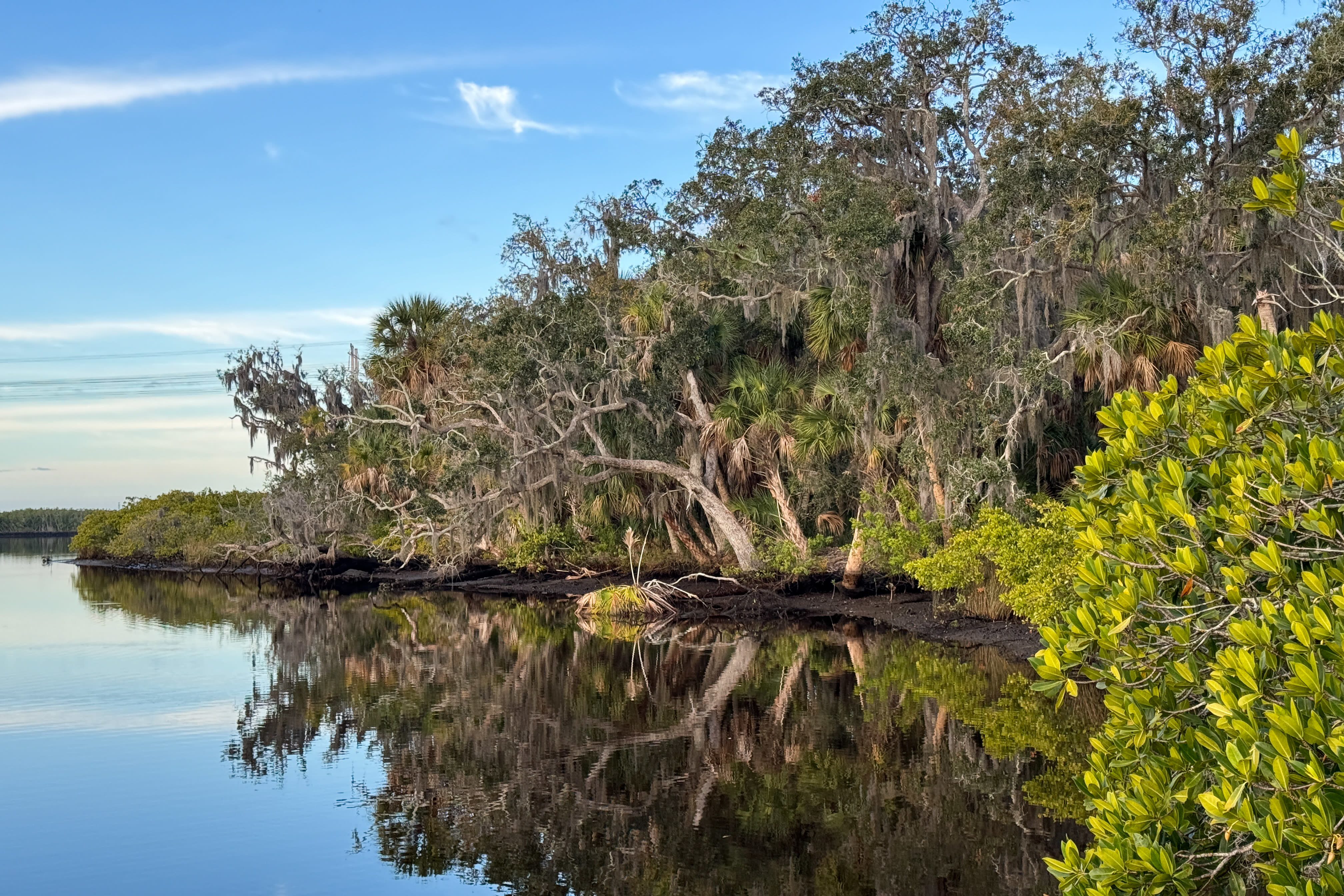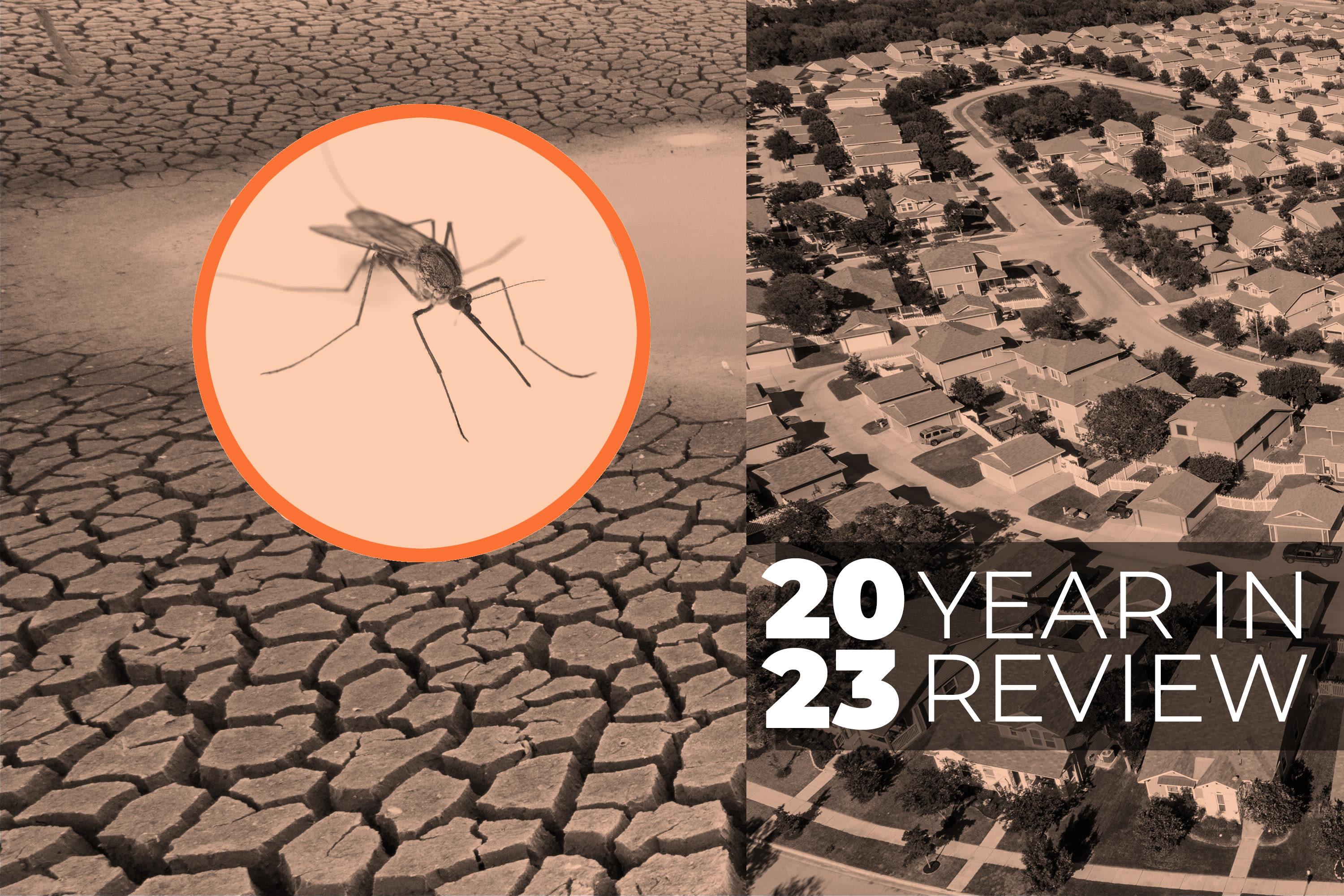One Man's Quest to Re-Wild the Intracoastal's Forgotten Islands
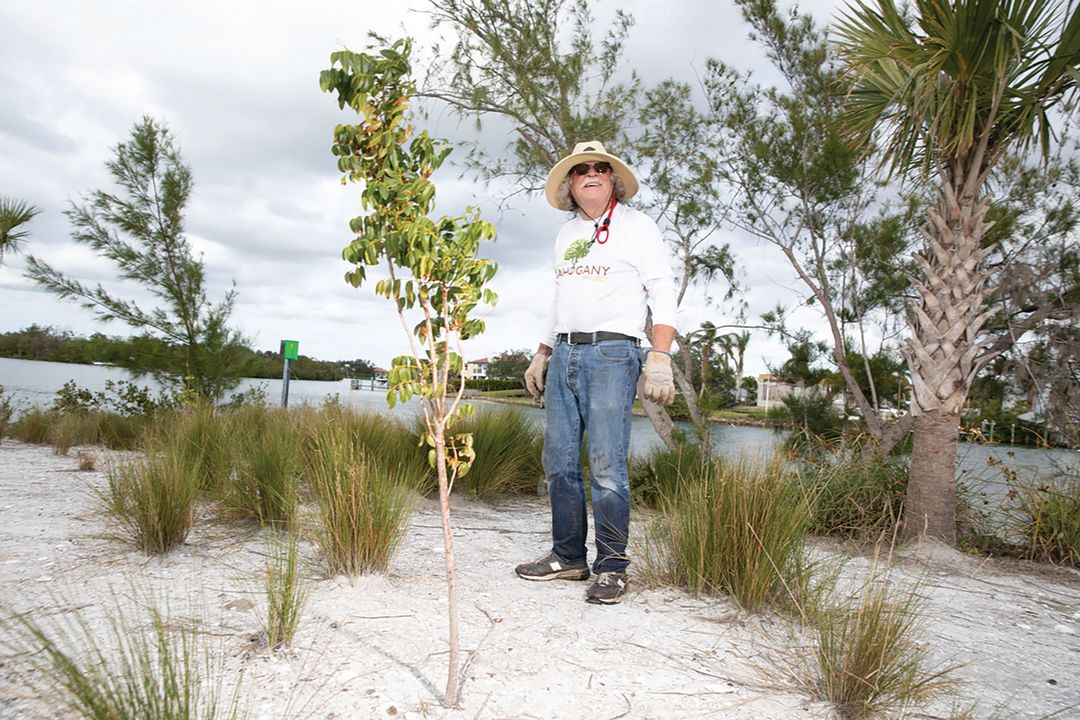
John Hoover with a mahogany tree he planted three years ago.
Image: Peter Fisher
John Hoover came out of the island brush on Turner Key looking like some kind of forest spirit. While everybody else was hauling coolers full of beer off their boat and onto the shore of the spoil island in the Intracoastal Waterway, Hoover carried a pickaxe and potted mahogany saplings.
Hoover is of average height, but there’s something gnome-like about him. He has a bushy, white mustache, and his eyes squint like he’s smiling even when he’s not. For more than five years, he has sowed native Florida plants on 10 different spoil islands like Turner Key, dreaming of returning Florida to the glory of its past. Though he plants a variety of local species (live oak, passionflower, sea grapes, saltbush, slash pine and red cedar), he focuses mostly on one: mahogany. Naturally, he calls his mission The Mahogany Project.
The whole idea started when Hoover, who recently retired after working at Whole Foods Market for many years, was chatting with a fishing buddy. “We wondered what we could reengineer to better support wildlife and got to talking about the spoil islands,” Hoover says.
These manmade islands came about in the 1940s and ’50s when we dredged bays to build the Intracoastal. The “spoil” material was piled in the middle of the channels and, eventually, plants and animals found their way onto them. Trouble was, the islands became overrun with non-native plants like Australian pine and carrotwood. Hoover wanted to re-wild the place with local plants. “So we got to thinking about mahogany,” he says.
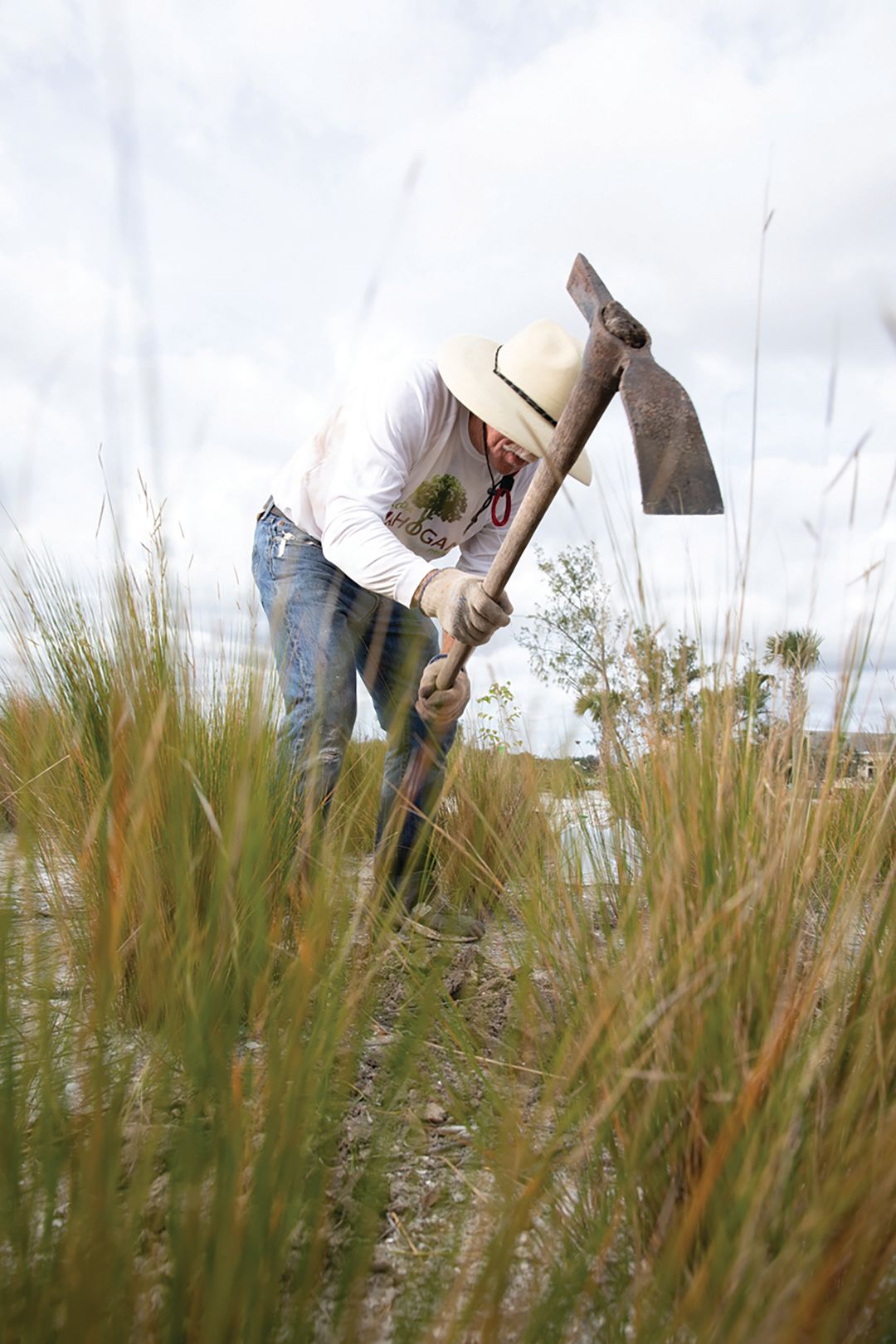
Hoover planting and watering mahogany saplings.
Image: Peter Fisher
There are three kinds of “genuine” mahogany in the world. Swietenia macrophylla from South and Central America, Swietenia humilis from Pacific Central America and Swietenia mahagoni, or Cuban mahogany, whose northernmost range is South Florida. Hoover believes that this native mahogany can outcompete its invasive rivals because of its salt tolerance and the way the tree shoots through the canopy.
Of all the mahoganies, Swietenia mahagoni is of the highest quality for woodworking. It does not warp, shrink, swell or twist. It is resistant to moisture, it holds its shape and it is coveted for its red colors. Perhaps too coveted. The tree was harvested to near extinction. You’ll still find a tree here and there, but the commercial mahogany industry is gone. While we still desire the wood, we mostly receive illegally harvested mahogany from the jungles of Peru.
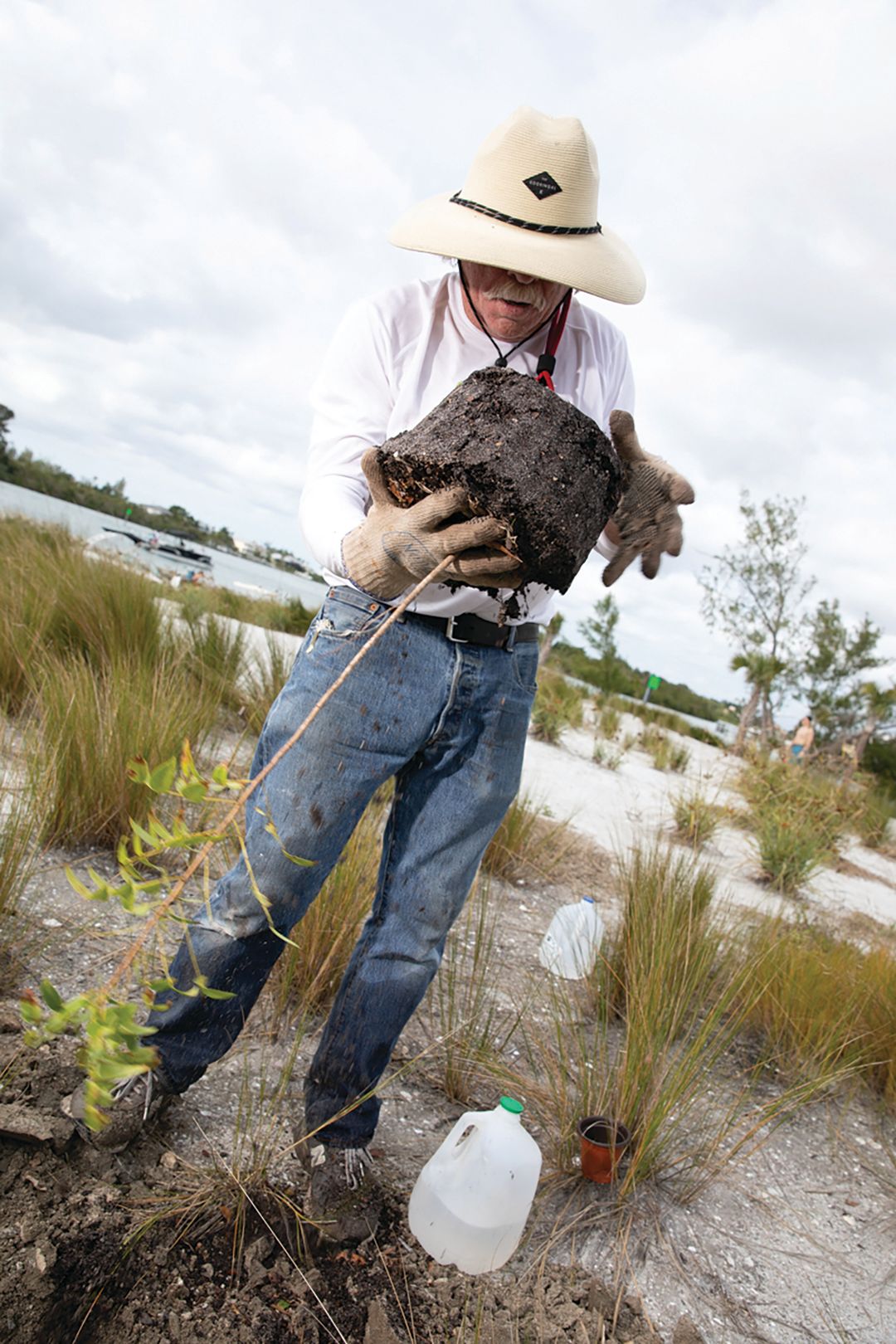
Hoover estimates he’s planted more than 200 mahogany trees, and 80 percent are still alive.
Image: Peter Fisher
Hoover collects seeds from some of the few local mahogany trees still around, sprouts them in his backyard and then loads up his sea-beat Carolina Skiff with dozens of plants and jugs of water and heads to an island. “I haven’t spent much money,” Hoover says. “Bought some topsoil, a few pots—all told I’ve spent maybe a few hundred dollars.” But he has spent time. He estimates he’s planted more than 200 mahogany trees, and 80 percent are still alive.
Technically, you’re not supposed to do this. Planting trees on publicly owned land is the purview of the government, and some conservationists argue that mahogany is not native to our area because it didn’t grow this far north. Hoover’s sense of duty to the mahogany supersedes these concerns.
“I’ll ask for forgiveness if somebody gets upset about it,” he says. “And the climate has changed several times over the last 2 or 3 million years. Who is to say that mahogany wouldn’t grow here now if we hadn’t chopped so much of it down?”
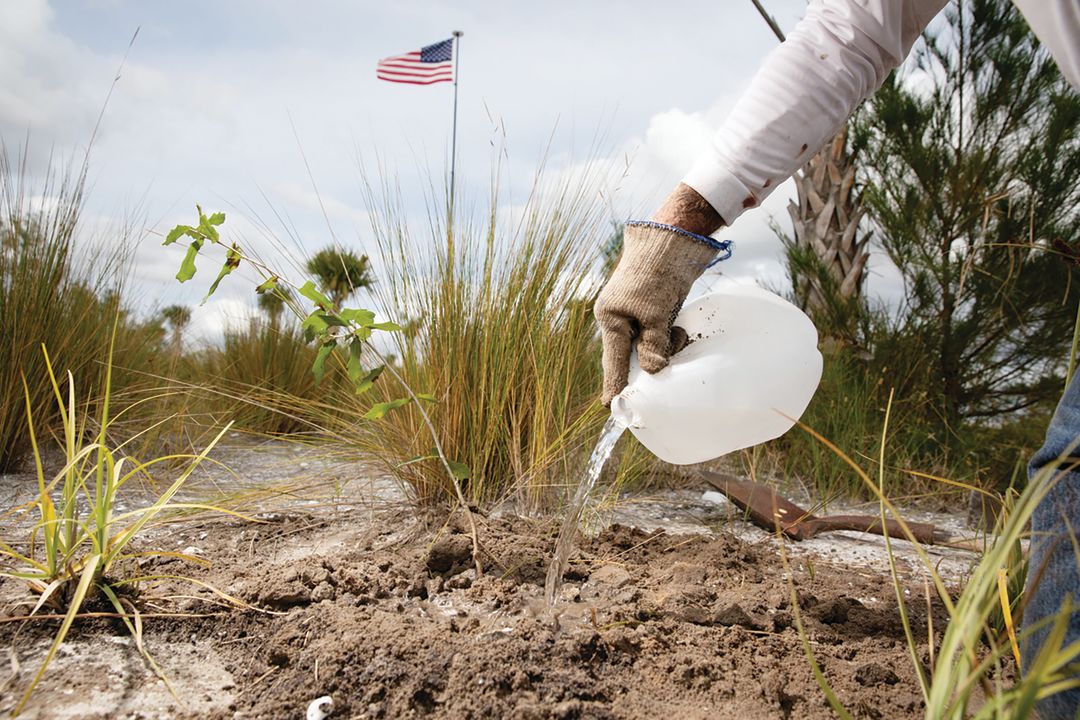
It takes at least 25 years for a mahogany tree to reach maturity.
Image: Peter Fisher
It takes at least 25 years for a mahogany tree to reach maturity. Hoover is 70, and will likely not live to see the full fruit of his labor. He doesn’t mind. He grew up in Orlando listening to old timers talk about what Florida used to be like. “I can’t stop the real estate developers, but I can save little pieces of Florida here and there,” he says.
Hoover never had any kids. Not that he didn’t want to; it just didn’t happen. “This is my gift to the future,” he says, gesturing to a mahogany tree that he planted four years ago that is now 10 feet tall and greener than the Australian pines that surround it. “I’m going to plant these trees and create a little island of habitat for the little birds and kids.”
